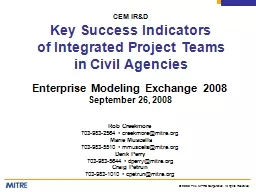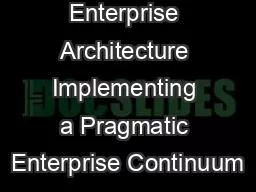PPT-Enterprise Modeling Exchange 2008
Author : test | Published Date : 2019-11-24
Enterprise Modeling Exchange 2008 September 26 2008 Rob Creekmore 7039832564 creekmoremitreorg Marie Muscella 7039835510 mmuscellamitreorg Derik Perry 7039835644
Presentation Embed Code
Download Presentation
Download Presentation The PPT/PDF document "Enterprise Modeling Exchange 2008" is the property of its rightful owner. Permission is granted to download and print the materials on this website for personal, non-commercial use only, and to display it on your personal computer provided you do not modify the materials and that you retain all copyright notices contained in the materials. By downloading content from our website, you accept the terms of this agreement.
Enterprise Modeling Exchange 2008: Transcript
Download Rules Of Document
"Enterprise Modeling Exchange 2008"The content belongs to its owner. You may download and print it for personal use, without modification, and keep all copyright notices. By downloading, you agree to these terms.
Related Documents














